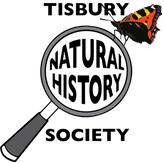|
Readers will have seen regular notices in Focus about workdays at Oysters Coppice. With spring approaching, this small but valuable woodland is ready to come into its own. In February and March, the wild daffodils come into bloom. They look wonderful in early spring sunshine, as drifts of their small, pale yellow trumpets nod in the breeze below the hazel catkins. The wild species is probably the flower about which Wordsworth was writing in his famous poem.
Soon after the daffodils come carpets of bluebells one of the beauties of a British woodland in spring. But the wood is full of other plants and wildlife by virtue of being an ancient woodland. This is the term used to describe an English woodland that is shown to have persisted since 1600 which is when maps became fairly reliable. Ancient woodland is rare, covering only 2.5% of the country. A map from around the turn of the 19/20th Century shows a wood with the current outline, and even depicts a footpath through it running along the same line as today. Having retained woodland cover for so long, ancient woods develop and retain rich communities of plants, animals and fungi not found elsewhere. These are lost when land is cleared for agriculture, and most will not return if a new wood is subsequently replanted on the same site. The wood is on a gentle north facing slope dropping about 45m from top to bottom. The top (southern) end lies on sandstone but most of the wood lies on mudstone and muddy is what the wood gets in winter when the springs and flushes run with water. Where the ground is drier oaks can grow but much of the wood is dominated by hazel, ash, and the damp-loving alder. It is probably the dampness of the ground combined with the north facing slope that saved the wood from clearance for agriculture. Oysters Coppice is just one of several interconnected ancient woodlands in and around Gutch Common, probably all surviving for similar reasons which, combined, provide a significant area of valuable habitat. Coppicing is a woodland management system which crops relatively young growth from regrown stools on a regular rotation, while retaining some longer growing standard trees above. Over centuries this would have provided an annual crop of poles for a variety of uses as well as maintaining woodland cover. This provided a relatively consistent environment within the wood, although the amount of sunlight reaching the woodland floor would vary according to how recent an area of the coppice had been cut. Ash, hazel, and alder respond well to coppicing the latter doing well in the wetter parts of the wood. The coppicing is now undertaken by volunteers to let light in and create the temporary clearings which are so beneficial for wildlife. There is a circular path around the wood which volunteers also maintain. While visitors are welcome at any time, the owners, Wiltshire Wildlife Trust, ask visitors to keep their dogs on leads and not to stray off the path. In so doing they can minimise disturbance to the wildlife communities that have taken centuries to develop. by Andrew Graham Comments are closed.
|
Photo: Avocets (Izzy Fry)
The headers display photos taken by our members. Do get in touch via the Contact Form if you'd like to submit a photo for selection.
Archives
May 2024
Categories
All
|

 RSS Feed
RSS Feed